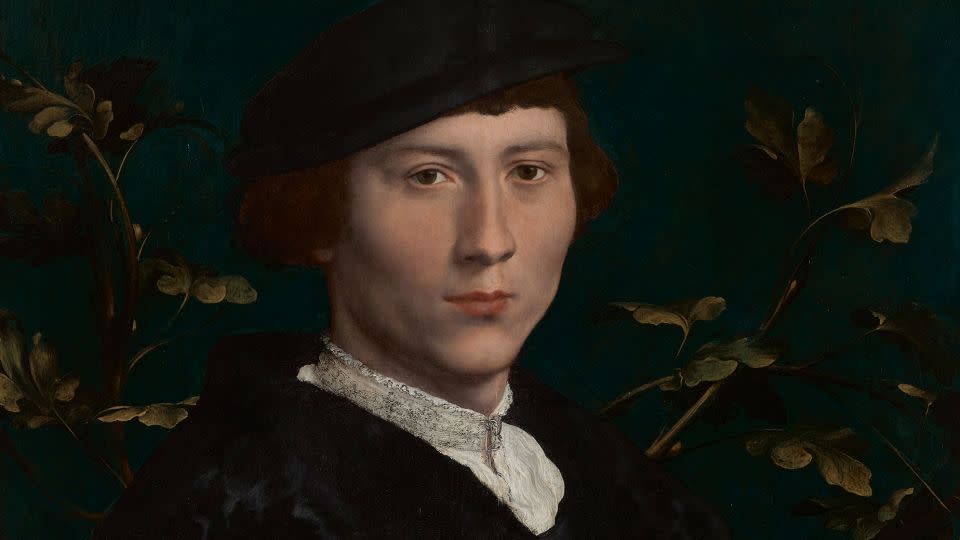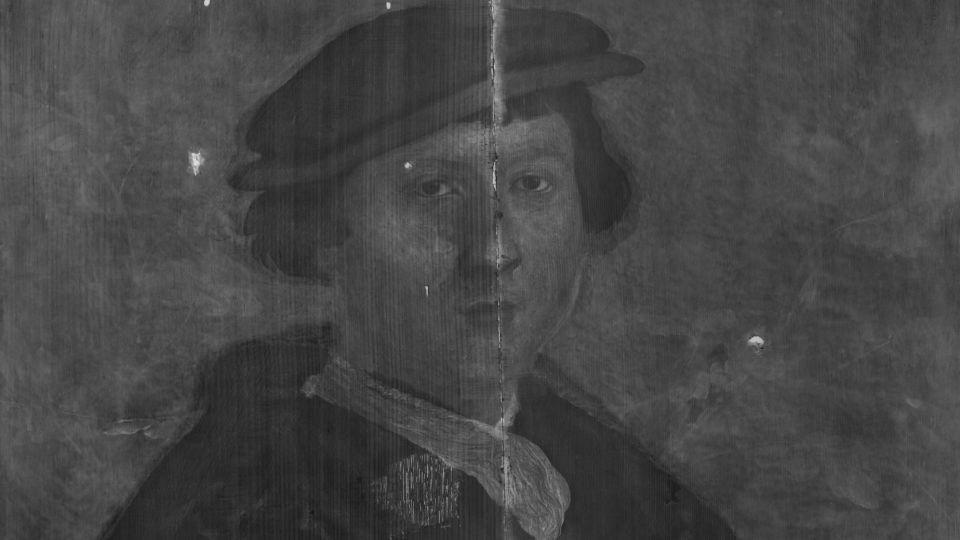X-ray reveals this 16th-century portrait got a cheekbone glow-up
Editor’s Note: This article was originally published by The Art Newspaper, an editorial partner of CNN Style.
Young Derich Born’s cheekbones were not always sharp enough to peel apples. New research and conservation work on the 1533 portrait by Hans Holbein the Younger has revealed that the painter made repeated small changes, each time giving Born even more chiseled features.
The dazzling result bears an inscription on the parapet under Born’s arm, presumably composed by Holbein. Lifted from a near-identical tribute to Albrecht Dürer, the translated statement boasts: “If you added a voice, this would be Derich his very self. You would be in doubt whether the painter or his father made him.”
The painting, newly conserved after work at the J. Paul Getty Museum in Los Angeles, California, was once owned by Charles I, and bought back by Charles II as he tried to reassemble the Royal Collection scattered under the politician Oliver Cromwell. It will now star in an exhibition at the Queen’s Gallery in Buckingham Palace, opening November 10, which traces the work in England of the German-born Holbein, and his rise to become the favorite artist of the Tudor court.
Born was not royal but a German merchant in the Steelyard in London, the Thames-side headquarters of the Hanseatic League — a powerful group of traders, at least seven of whom commissioned portraits from Holbein, with two now surviving in the Royal Collection, according to the exhibition catalog. Born was just 23 when he commissioned his portrait, and was evidently as arrogant as his features. He was expelled from England in 1541 after getting into an unwise dispute with the powerful Duke of Suffolk, and according to the show’s curator, Kate Heard, was still grumbling about it a decade later.
Nicola Christie, the head of painting conservation at the Royal Collection, told The Art Newspaper she was concerned about the condition of the painting when the Getty Museum requested a loan for its own 2021-2022 Holbein exhibition, “Capturing Character in the Renaissance.” The wealthy institution promptly offered to bring her to California for months of work with the assistance of its laboratories and a squad of scientists, but because of delays due to the Covid-19 pandemic, the painting was shown before it underwent conservation. The results, including gentle cleaning revealing the subtlety of Holbein’s treatment of the textures of black satin and fur, will be seen for the first time in the London exhibition.


The portrait was made on two planks of Baltic oak, with a seam running vertically through Born’s face. Christie discovered that, centuries ago, the splitting sections were separated and glued together slightly misaligned, leaving a visible ridge which was filled and overpainted.
Christie says it was impossible to contemplate separating the boards again. “I’m here to tell you that it is extremely well stuck together, they knew what they were doing in the 18th century,” she said.
But she succeeded in removing filler, revealing its original surface, and has painted in some of the losses.
“It was a long, long task working under a microscope, and quite terrifying, but one of the delights was finding original paint beneath these old layers,” she explained.
The analysis, including X-ray fluorescence spectroscopy and gas-chromatography-mass spectrometry, has identified the different layers and pigments Holbein used to build up the portrait, from the gray ground to the thin layers of paint for Born’s face and opulent outfit luxury clothing, using the most expensive dyes to achieve an intense shade of black, and finally the azurite background. The X-rays showed that Holbein made several adjustments to the face, shoulder and hat, giving Born more sculpted features.
No preparatory drawing survives for the portrait, but the painting will be shown with 40 of Holbein’s other most beautiful drawings from the Royal Collection, including studies of Henry VIII, his children, the future monarchs Mary I and Edward VI, and several wives including Anne Boleyn and Jane Seymour, according to the press release.
Born vanishes from history after trading a consignment of towels in Antwerp in 1549, but Heard has found no evidence that he died young.
“It’s just a question of which records survive — he may have lived a long prosperous life, still grumbling about being kicked out of England,” she said.
Read more stories from The Art Newspaper here.
For more CNN news and newsletters create an account at CNN.com


